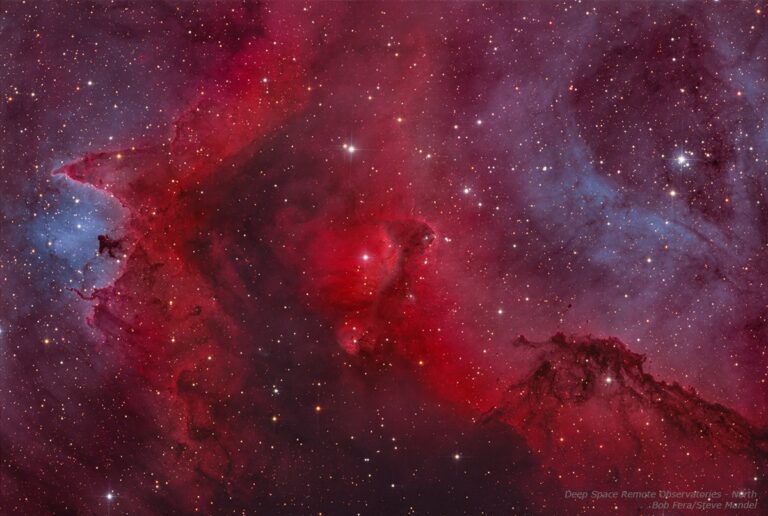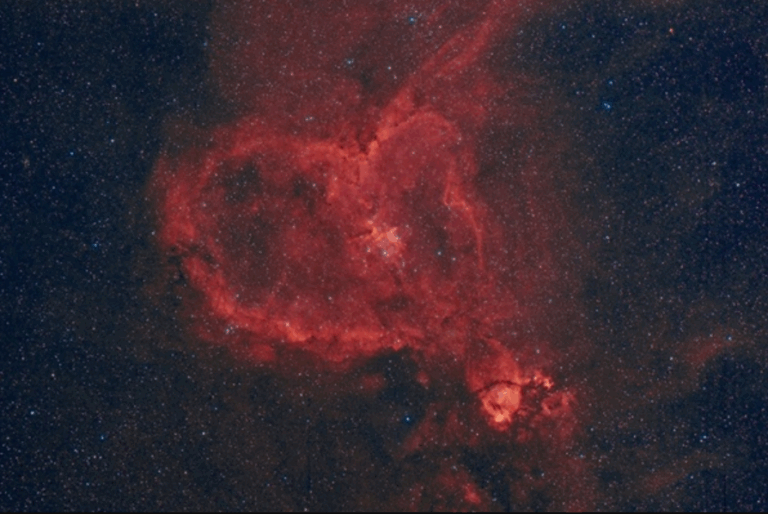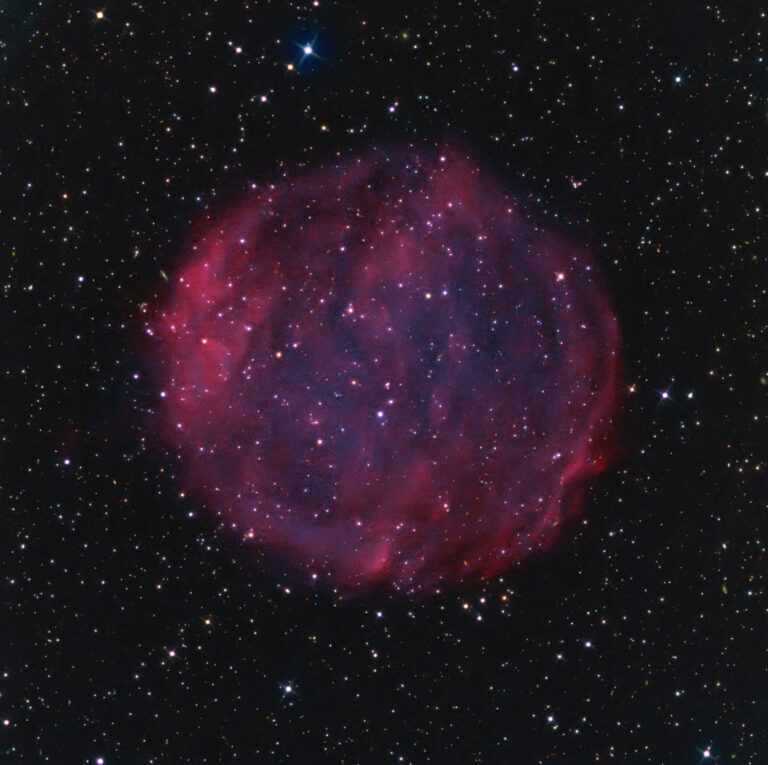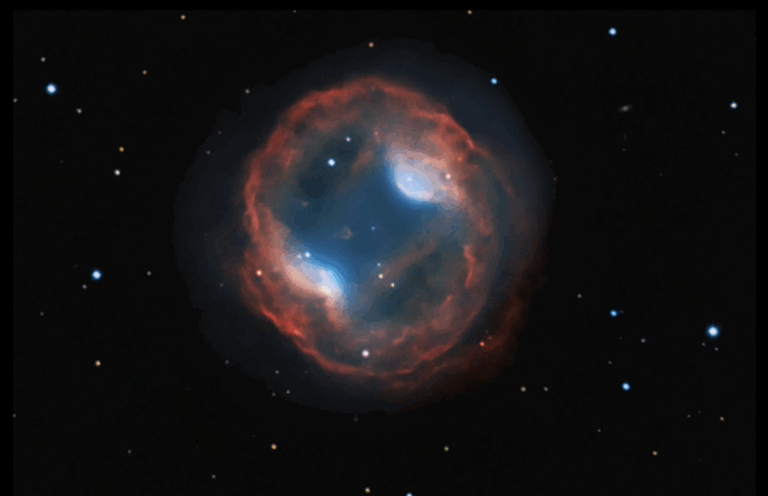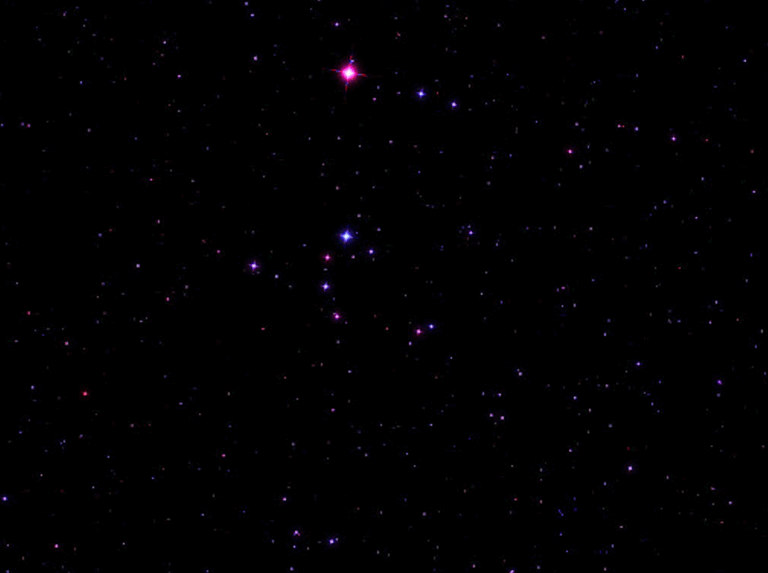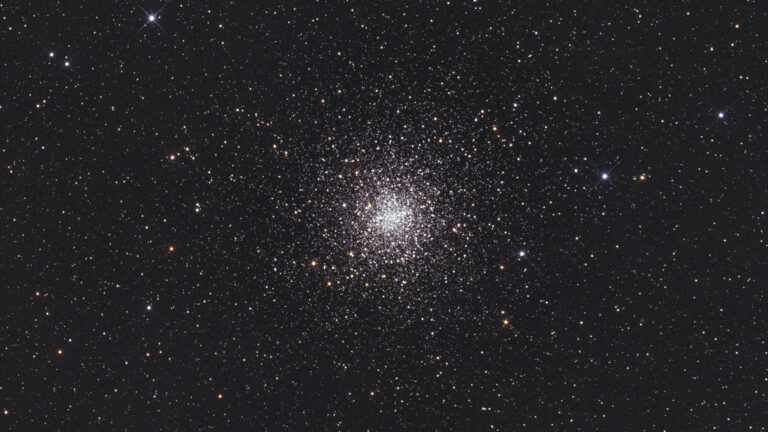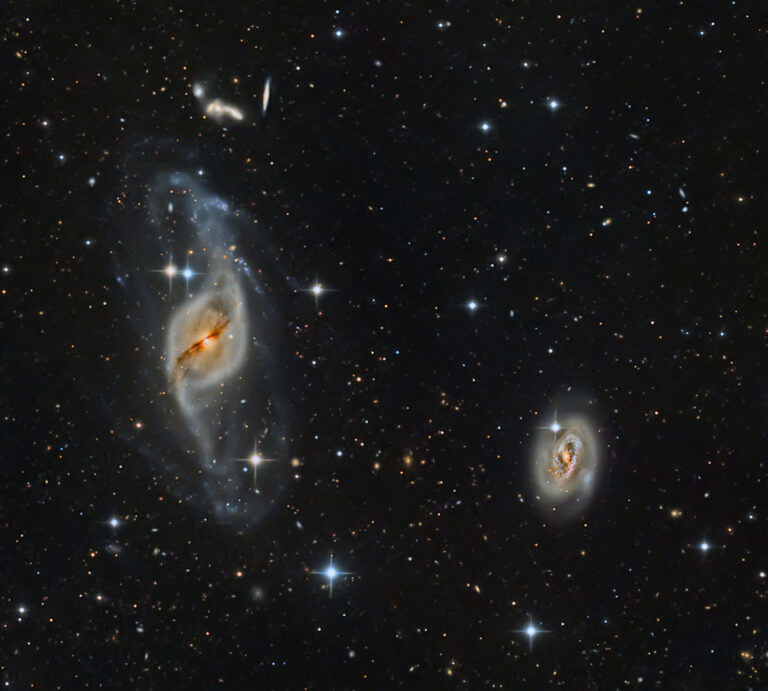Key Takeaways:
A treasure within a treasure — that’s open cluster M46 and planetary nebula NGC 2438, which lie in Puppis, the Stern of the now-deprecated constellation Argo Navis (the Ship Argo).
M46 lies about 15° east of Sirius in the mists of the Milky Way, where it spans about 20′ of sky, or about 30 light-years of space. M46 is itself part of a line-of-sight pairing with open cluster M47, a mere 1½° to its west. While M47 appears as a random scattering of disparate suns, M46 presents us with a much more intriguing sight. This 6th-magnitude sphere of uniform light glows like the head of a tailless comet, yet it is anything but.
Charles Messier found M46 on Feb. 19, 1771; he called it a “cluster of very faint stars … [that] could be seen only with a good telescope.” Caroline Herschel, who independently discovered the cluster some two years later, noted that her brother William found it to have “an astonishing number of stars.” And indeed it does.
In a telescope, this 250-million-year-old cluster, seen some 5,000 light-years distant, looks more like a loose and finely resolved globular star cluster than an open cluster. While M46 contains some 500 suns, less than 200 of those can be spied reasonably well through most backyard telescopes. The cluster brightens ever so gradually to a somewhat rectangular center with vacancies throughout, especially at high powers.
The most magnificent aspect of the cluster lies hidden among its northern stars: the multi-shelled planetary nebula NGC 2438. While some studies have placed his object 1,000 light-years farther away than M46, the Gaia spacecraft recently revealed the planetary’s central star is less than one-third the distance of the cluster. The magnitude 10.8 nebula, which formed only about 4,500 years ago, is surprisingly obvious even through a 3-inch telescope at 150x and greater. While deep images show the planetary with dual shells, which are expanding at 23 miles per second (37 kilometers per second), most backyard telescopes will show it only as a singular 1′-wide annulus of ghostly light.
Make sure to explore Astronomy’s full list of 101 cosmic objects you must see. New entries will be added each week throughout 2022.
To get the latest astronomical news and observing content delivered directly to your door, subscribe to Astronomy magazine today!


